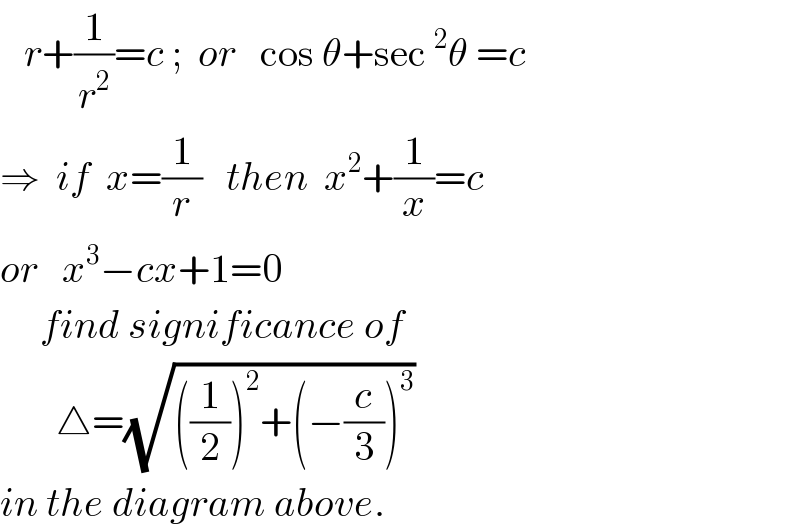Question Number 26389 by ajfour last updated on 24/Dec/17

Commented by ajfour last updated on 24/Dec/17

$$\:\:\:{r}+\frac{\mathrm{1}}{{r}^{\mathrm{2}} }={c}\:;\:\:{or}\:\:\:\mathrm{cos}\:\theta+\mathrm{sec}\:^{\mathrm{2}} \theta\:={c} \\ $$$$\Rightarrow\:\:{if}\:\:{x}=\frac{\mathrm{1}}{{r}}\:\:\:{then}\:\:{x}^{\mathrm{2}} +\frac{\mathrm{1}}{{x}}={c}\: \\ $$$${or}\:\:\:{x}^{\mathrm{3}} −{cx}+\mathrm{1}=\mathrm{0} \\ $$$$\:\:\:\:\:{find}\:{significance}\:{of}\: \\ $$$$\:\:\:\:\:\:\:\bigtriangleup=\sqrt{\left(\frac{\mathrm{1}}{\mathrm{2}}\right)^{\mathrm{2}} +\left(−\frac{{c}}{\mathrm{3}}\right)^{\mathrm{3}} }\: \\ $$$${in}\:{the}\:{diagram}\:{above}. \\ $$
